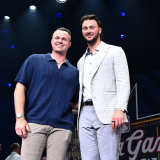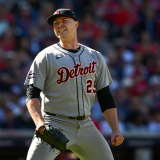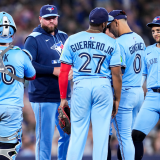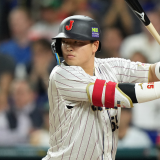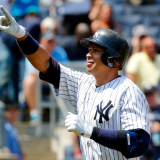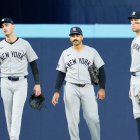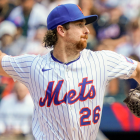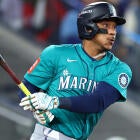Colson Montgomery, Isaac Collins and more surprising rookies who have stood out in the 2025 MLB season
Here are five freshmen who have exceeded expectations this year
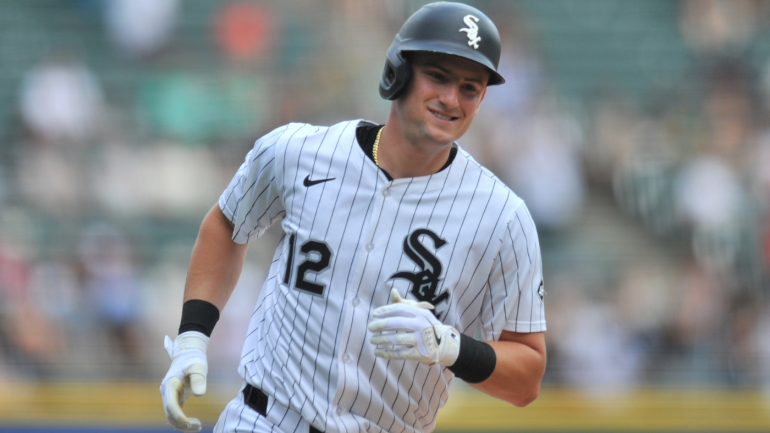
The beauty and agony of baseball is that it doesn't matter how much time and effort you put into predicting the future, the game is still going to find a way to humble you. If you need an example of that dynamic, consider Chicago White Sox rookie infielder Colson Montgomery.
Montgomery, 23, has been a revelation for the White Sox since debuting on July 4. In 32 games to date, he's batted .241/.311/.565 (139 OPS+) with 10 home runs and four additional extra-base hits. Mind you, this is the same Montgomery who had homered just 29 times in nearly 200 Triple-A games over the past two seasons -- all the while notching an unimpressive .717 OPS that lowered his stock from universal top prospect who elicited comparisons to All-Star shortstop Corey Seager to … well, someone who struggled to crack one of the worst rosters in all of Major League Baseball.
What happened here? Did Montgomery flip a switch when he received the call? Was he just bored in the minor leagues? Or is this just a well-timed heater? The answer is to be determined at a later date. For now, what's worth watching is whether or not Montgomery can make his combination of swing-and-miss and chase tendencies work for the long haul. So far, he's running a 33.2% whiff rate and a 33.5% chase rate in the majors, putting himself in select company. Here's a complete list of qualified hitters to clear 30% in both metrics so far this season:
| Player | Whiff rate | Chase rate | OPS+ |
|---|---|---|---|
32.6% | 34.8% | 131 | |
Eugenio Suárez | 33.1% | 31.1% | 129 |
32.1% | 31.8% | 122 | |
32.9% | 35.4% | 120 | |
30.0% | 35.7% | 97 | |
Adolis García | 31.3% | 35.7% | 89 |
Luis Robert Jr. | 32.1% | 32.3% | 84 |
It's an interesting group. You have several All Star-caliber hitters, but also a few guys who haven't been able to make things work this season. Whichever side Montgomery joins, it's a personal victory for him that it's even a matter of discussion. It's also a reminder to folks like myself, those evaluating ballplayers from the amateur ranks on up, that you're never going to have every player's arc pegged -- no matter how hard you try to make it so.
To honor Montgomery's brilliant introduction to the majors, here are four other rookies who have surprised me with how well they've performed this season.
1. Isaac Collins, OF, Milwaukee Brewers
Collins, 28, is a switch-hitting outfielder the Brewers claimed off waivers from the lowly Colorado Rockies a few years ago. He's spent his rookie season hitting .297/.395/.458 (141 OPS+) with eight home runs, 13 stolen bases, and an estimated 3 Wins Above Replacement. That last statistic makes him one of the four most productive members of the best team in baseball; no one, even Milwaukee residents, would've believed that last bit as of just a few months ago.
Collins, though usually a plus statistical contributor, never received much prospect love on account of his advanced age (he was 26 when he reached Triple-A) and an unimpressive tools outlay. Even now, he's not someone posting eye-popping exit velocities or sprint speeds. Collins' keys to success have been his outstanding eye; his feel for making good line-drive contact as a low-ball hitter; and glovework that makes it clear he was woefully undersold by the eye test.
Isaac Collins was named NL Rookie of the Month for July earlier today
— MLB (@MLB) August 5, 2025
He's already started his repeat campaign for August! pic.twitter.com/vQKOECvKnQ
Will Collins continue to do his best approximation of a stronger Steven Kwan? Maybe not to this extent. He's been crucial to the Brewers' success, however, and he deserves some shine.
2. Noah Cameron, LHP, Kansas City Royals
Cameron didn't make the Royals top-three prospect ranking last winter, and he wasn't too far removed from posting a 4.85 ERA in 33 Double-A starts when he made his big-league debut back in April. He's since taken a permanent spot in the Royals rotation, holding the opposition to one run or fewer in 10 of his 16 appearances.
In turn, Cameron is sporting a 162 ERA+ and a 2.92 strikeout-to-walk ratio through his first 93 innings. He's been the most productive rookie pitcher in the entire sport, according to Baseball Reference's Wins Above Replacement metric.
Noah Cameron, Filthy Changeups. 😷 pic.twitter.com/NXBG5TZnEh
— Rob Friedman (@PitchingNinja) August 9, 2025
Cameron's high three-quarters arm slot enhances a five-pitch arsenal that's built around a low-90s fastball and vertical break. He throws each of those offerings at least 15% of the time too, making it tough for the opposition (particularly right-handed batters) to key in on what's coming next. That's allowed him to successfully evade barrels and control quality of contact.
3. Jacob Lopez, LHP, Athletics
If you had told people, back when the Athletics acquired Jeffrey Springs in a trade with the Tampa Bay Rays, that a member of that deal would lead their respective rotation in ERA+ this season, the odds are that most people would have guessed it would be Springs himself. All other votes would have gone to Joe Boyle, with the assumption being that Rays pitching coach Kyle Snyder would get him in the zone more often. As it turns out, neither of those pitchers have accomplished what Lopez has to date.
Indeed, Lopez is toting around a 3.59 ERA (116 ERA+) and a 3.13 strikeout-to-walk ratio in 18 outings (14 of them starts). He'll come into his next appearance with the opportunity to extend a 17-inning scoreless streak that encompasses his last three starts. Who would've thought?
Jacob Lopez, Filthy 80mph Slider. 😷 pic.twitter.com/xOVsmTH2wX
— Rob Friedman (@PitchingNinja) June 26, 2025
Lopez doesn't throw hard (his fastball has averaged 90.7 mph this year), but he benefits from a deceptive delivery. Not only does he really get down the mound and throw across his body, but he also releases the ball from a low three-quarters slot that enhances his side-to-side movement. Lopez is generating nearly 30% whiffs on his fastball-slider combination, and he's doing it while ranking near the top of the league in hard-hit percentage.
A soft-tossing lefty with extreme fly-ball tendencies wouldn't seem like a workable combination in West Sacramento. Credit to Lopez for finding a way to succeed against the odds.
4. Liam Hicks, C/1B, Miami Marlins
Hicks was clearly a player of interest in the league dating back to last summer, when he was traded to the Detroit Tigers as part of the Carson Kelly deal. The Marlins subsequently took him in the Rule 5 Draft, but it wasn't clear that he was going to be able to stick given that he was an undersized catcher (he's listed at 5-foot-9) reliant on singles and walks.
Hicks has nevertheless made his combination of extreme contact and plate discipline work at the big-league level, hitting .260/.354/.363 (100 OPS+) with four home runs and 10 additional extra-base hits in 82 games. He's been particularly effective when he's had the platoon advantage, posting a .278/.372/.390 slash line against righties. He ranks in the 100th percentile in chase rate and in the 88th percentile in contact rate, validating that he has some serious zone- and bat-control skills. (Just, um, don't look too closely at his strength-based indicators.)
Liam Hicks gives the @Marlins a 1-0 lead! pic.twitter.com/dfH8GhYMOn
— Marlins Radio Network (@MarlinsRadio) August 10, 2025
I do question what, exactly, Hicks' role will be moving forward. The Marlins have split his time between catcher and first base, but he's not an ideal fit at either spot. His defense is below average behind the dish, while his bat plays as light when he's cast too far down the defensive spectrum. That isn't to take anything away from his season; it's just worth acknowledging that, for as productive as he's been, he remains a bit of a puzzle.








